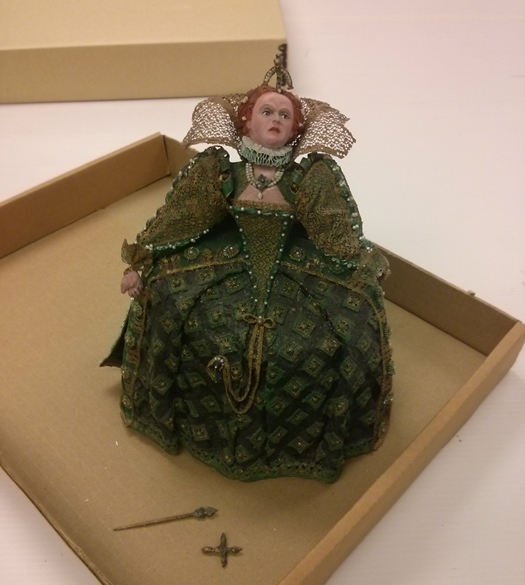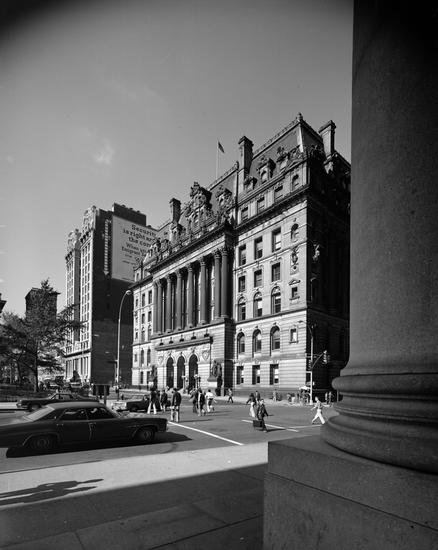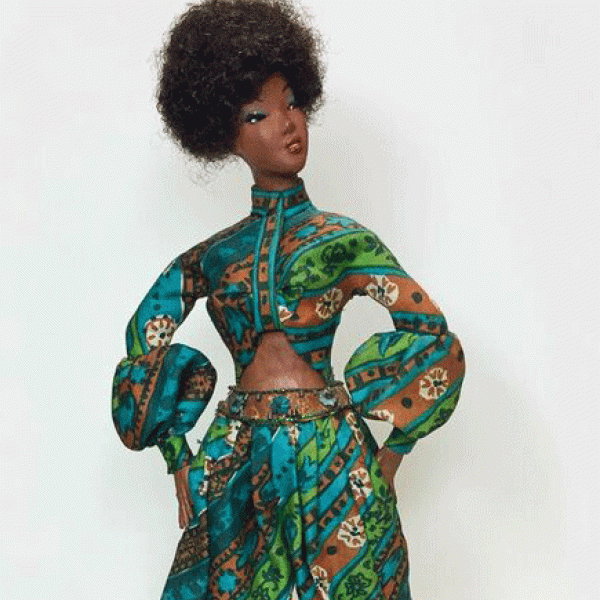The Hunt
Tuesday, September 19, 2017 by
One of the best things about a registrar’s job is the satisfaction that comes from verifying information, seeking out missing documentation, and tying up loose ends. As registrars, we are committed to creating the most detailed records of the move of objects in and out of the Museum; however from time to time, despite the best efforts of our predecessors, things go awry. As the current custodians of the Museum’s collection, it is our duty to attempt to remedy situations left by our predecessors. This is a bittersweet story about one way that can happen.
Museum staff are engaged in an ongoing, long-term project to review and assess the Museum’s holdings. As part of this process, I located a doll with an identifying number attached which indicated it was a loan to the Museum. The tag included the name of the lender, along with a note that return attempts had been made dating back to the 1990s, with no success.
I started with a thorough search of our documentation, and found that we had borrowed it for an exhibition in 1986! Additionally, I found the New York City address and phone number of the lender. I will take a moment here to say that the Museum promptly returns ALL of our loans directly after exhibitions close, but occasionally, for whatever reason, the lender does not respond to attempts to return the object. Registrars may try for years to follow up. Although it seemed unlikely that the lender was still there, given the unsuccessful previous attempts at return, I tried to call the lender. The number had been disconnected, which came as no surprise.
There a number of steps we start to take when tracking a “lost lender.” Prior to sending a letter to the last known address, I called the management company of that building, but they would not give out any information about a current or previous resident, beyond verifying that the lender no longer lived there.
Then I searched the internet for a more recent address or phone number. This is normally quite easy information to find, especially since the lender had a rather uncommon name. This type of process is much more difficult when the lender has a name like “John Smith.” I was surprised when I could not find anything.
I searched more broadly on the internet, and found a reference suggesting that the lender had passed away. As with so many sites online, there was no citation for this information, and I was hesitant to believe information posted by a random person on the internet.
After exhausting all readily available avenues of investigation, it became clear that a trip to Surrogate’s Court was necessary. Per definition on the New York Courts website, “the Surrogate's Court hears cases involving the affairs of decedents, including the probate of wills and the administration of estates.” This includes estates of people who die without a will. There is a Surrogate's Court in each county in the state, and it was through there that I located the lender’s will.
Sadly, he had died of complications relating to AIDS, in 1988, at the height of the AIDS crisis. He died overseas, and it was possible he was traveling prior to his death when previous Museum employees reached out to return the loan. The paperwork indicating he had property at the Museum must have somehow been overlooked by the executor of his estate. The will listed the name and address of his heir. Thankfully, I was able to locate his heir easily, and make arrangements to return the property.
As the saying goes, “there are 8 million stories in the naked city, this has been one of them.” Abandoned property is a surprisingly common occurrence in most museums, for any number of reasons. Despite how much time and effort it takes to locate the rightful owner(s) or heir(s), museum registrars are committed to returning the property appropriately once they start the hunt!
Readers wanting a more in-depth examination of the AIDS crisis and artists’ responses to it are encouraged to visit our exhibition AIDS at Home: Art and Everyday Activism, on view through October 22, 2017.




